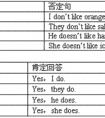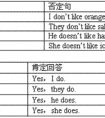请先阅读下面短文,掌握其大意,然后从方框中所给的词中选出最恰当的10个,用其适当形式填空。每个词限用一次。 day, but, from, reading, much, and, send, famous, those,-八年级英语
题文
| 请先阅读下面短文,掌握其大意,然后从方框中所给的词中选出最恰当的10个,用其适当形式填空。每个词限用一次。 day, but, from, reading, much, and, send, famous, those, say, full, hear Jane spent her holiday in Scotland. Two days ago, she 小题1: a letter to Mary and today Mr. Black received a card 小题2: her. "What does Jane 小题3: in her card, Mum? Let me have a look." Mary said. Jane said in her card, "I visited a lot of places. How are you all? I miss you very much." Mary stopped 小题4: the card and said, "The words in the card are less than 小题5: in the letter. Her letter was 小题6: of things. Let me read it for you." "I went to Edinburgh by train. I stayed there for three 小题7: and then I went to the mountains. I met a lot of young people there. They have climbed some mountains. I have been to many 小题8: lakes. I find that Scotland is 小题9: more beautiful than England. By the way, the restaurant is very nice 小题10: I have made many new friends. I'm having a wonderful time here now." |
答案
小题1:sent 小题2:from 小题3:say 小题4:reading 小题5:those 小题6:full 小题7:days 小题8:famous 小题9:much 小题10:and |
试题分析:简在苏格兰度假,两天前她寄来明信片,玛丽为母亲读了明信片上的内容,同时她说卡片上的内容没有书信上写得多。在信中大致介绍了她去了大山,遇到了许多年青人,他们爬山。还去了一些著名的湖泊,同时自己表示发现苏格兰要比英格兰更加漂亮的多。还结交了一些朋友,现在玩的很开心。 小题1:考查动词及语境的理解。原文:Two days ago, she sent a letter to Mary.句意:两天前,她给玛丽写了一封信。固定短语send sth. to sb.故填:sent. 小题2:考查介词及语境的理解。分析句意:收到了卡片从她那里。考查固定短语receive sth. From sb.故填:from. 小题3:考查动词及语境的理解。联系原文,简在上面写了什么?在西方的表达中用say表示写的内容。及下文Jane said in her card,(简在卡片上说)更加明确应用say,故填:say. 小题4:考查固定短语及语境的理解。联系下文,她停下读,而是开始说话了,同时运用固定句型:stop doing停止做某事,故填:reading . 小题5:考查代词形及语境的理解。原文:The words in the card are less than those in the letter.卡片上的话语比写在信上的要少的多。Than 后的代词those指前面的words, 因为话语是复数,因此用those来代替。句意:故填:those. 小题6:考查形容词及语境的理解。句意:的信上写满了事情。考查固定短语be full of 充满。故填:full 小题7:考查名词及语境的理解。分析原文,她在那里待上三天,用day的复数,故填:days. 小题8:考查形容词及语境的理解。联系上下文得知,已经去过了许多著名的湖泊。Lakes是名词要用形容词来修饰,故填:famous. 小题9:考查语境的理解。I find that Scotland is much more beautiful than England.句意:我发现苏格兰要发英格兰更加漂亮的多。修饰比较级要用much表示程度更深。故填:much. 小题10:考查连词及语境的理解。原文:the restaurant is very nice and I have made many new friends.句意:这家餐厅很不错,我也结交了许多新朋友。前后两句为并列关系,故填:and. |
据专家权威分析,试题“请先阅读下面短文,掌握其大意,然后从方框中所给的词中选出最恰..”主要考查你对 实义动词,实义动词的单数第三人称形式,动词短语 等考点的理解。关于这些考点的“档案”如下:
实义动词实义动词的单数第三人称形式动词短语
考点名称:实义动词
- 实意动词:
即行为动词,表示动作的动词。实义动词与系动词是相对的,能独立用作谓语。
它分为及物动词和不及物动词两种:
及物动词是指后面要求有直接宾语的动词;
不及物动词指后面不需要跟宾语的动词。 实意动词使用方法:
及物动词
后面必须跟宾语意义才完整的实义动词,叫做及物动词(transitive verb)。如:
I believe that the committee will consider our suggestion.我相信委员会将会考虑我们的建议。
“How long can I keep the book ?”Harry asked.哈里问:“这本书我可以借多久?”
Dr. Bethune set us a good example. 白求恩大夫给我们树立了好榜样。
Crude oil contains many useful substances.原油含有许多有用的物质。
不及物动词
本身意义完整后面不须跟宾语的实义动词,叫做不及物动词(intransitive verb)。如:
Birds fly.鸟会飞。
It happened in June 1932.这件事发生于一九三二年六月。
My watch stopped.我的表停了。
She spoke at the meeting yesterday evening. 她在昨天晚上的会上发了言。
兼作及物动词和不及物动词
英语里有不少实义动词可以兼作及物动词和不及物动词。这样的动词又有两种不同的情况
a)兼作及物动词和不及物动词时,意义不变。试比较:
Shall I begin at once?我可以立刻开始吗?(begin作不及物动词)
She began working as a librarian after she left school.她毕业后当图书馆管理员。(began作及物动词)
When did they leave Chicago?他们是什么时候离开芝加哥的?(leave 作及物动词)
They left last week. 他们是上周离开的。(left 作不及物动词)
b)兼作及物动词和不及物动词时,有时意义不尽相同。如:
Wash your hands before meals.饭前要洗手。
Does this cloth wash well? 这布经得起洗吗?- 英汉实意动词用法比较:
与汉语的比较,有时英语动词的及物和不及物的用法,与汉语的用法不一样,请注意下列两种情况:
a)有的动词在英语里只能用作不及物动词,而汉语则可用作及物动词,如arrive到达,agree同意,listen听。英语里这些动词后面常接介词。如:
We arrived at the railway station at noon.
我们于中午到达火车站。(at不能省去)
(比较:We reached the railway station at noon.)
Everybody listened to the lecture with great interest.
每个人都很有兴趣地听讲课。(to不可省去)
(比较:We all heard the lecture.)
Do they agree to the plan?他们同意这个计划吗?(to不可省去)
b)有的动词在英语里能用作及物动词,而在汉语里则不能用作及物动词,如serve为…服务。
Our children are taught to serve the people wholeheartedly.
我们的儿童被教以全心全意为人民服务
用于be动词之后,实义动词之前。 实意动词的用法:
肯定句:
主语+动词过去式+其它
否定句:
主语+助动词didn‘t+动词原型+其他
一般过去式:
Did+主语+动词原型+其他
考点名称:实义动词的单数第三人称形式
在一般现在时的肯定句中,当主语为非第三人称单数时,谓语动词用原形;
当主语为第三人称单数时,谓语动词用单数第三人称形式。
- 最新内容
- 相关内容
- 网友推荐
- 图文推荐
| [家长教育] 孩子为什么会和父母感情疏离? (2019-07-14) |
| [教师分享] 给远方姐姐的一封信 (2018-11-07) |
| [教师分享] 伸缩门 (2018-11-07) |
| [教师分享] 回家乡 (2018-11-07) |
| [教师分享] 是风味也是人间 (2018-11-07) |
| [教师分享] 一句格言的启示 (2018-11-07) |
| [教师分享] 无规矩不成方圆 (2018-11-07) |
| [教师分享] 第十届全国教育名家论坛有感(二) (2018-11-07) |
| [教师分享] 贪玩的小狗 (2018-11-07) |
| [教师分享] 未命名文章 (2018-11-07) |


![How much does it ______ to fly from Yancheng to Hainan Island?[ ]A. cost B. payC. spend D. take-七年级英语](http://www.00-edu.com/d/file/ks/4/2/shiyidongci/2020-01-05/small7dcf2f05998de63e10cc3629787031c81578210087.png)

![He always _____TV in the evening. He _____ listening to the radio. [ ]A. watch, don't like B. watches, doesn't like C. watching, don't like D. watch, do-七年级英语](http://www.00-edu.com/d/file/ks/4/2/shiyidongci/2020-01-05/small45d599b4a60b84e61cec210bfbf051f51578214524.png)
![I'd rather ___ to the Mcdonald's Restaurant because I like to listen to quiet music.[ ]A. to go B. going C. go D. went-八年级英语](http://www.00-edu.com/d/file/ks/4/2/shiyidongci/2020-01-05/small1767bba1727fef2c035c53dcbd9bc20e1578209517.png)
